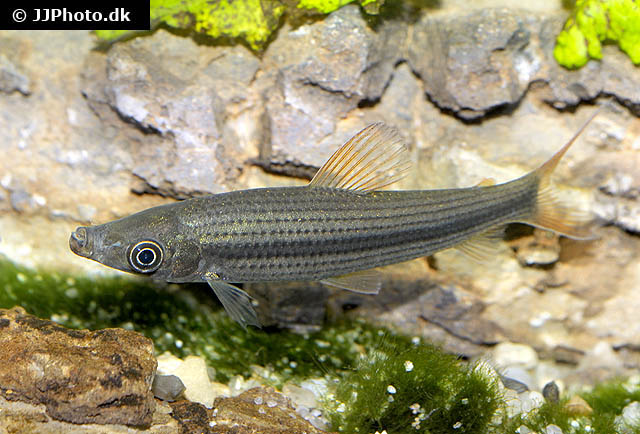| Anostomidae (Headstanders) |
| 15.17 cm SL (male/unsexed) |
|
benthopelagic; freshwater |
| South America: Rio Tapajos drainage in Brazil and throughout Rio Orinoco drainage, including the rios Casiquiare, Cinaruco, San Bartolo and Ventuari. |
|
Vertebrae: 38-44. The only member of the subfamily Anostominae with a single longitudinal stripe. It also lacks transverse bars across the dorsum. Resembles P. gracilis but is distinguished by the following characters: a dark horizontal stripe along the lower half of the lateral-line scale row and the upper half of the row adjoining; four branchiostegal rays; two pores on the sensory canal of the nasal bone between its anterior and posterior openings; four pores associated with the sensory canal of infraorbital one and arranged in an approximate square; nearly complete closure of the metapterygoid/quadrate fenestra; absence of a posterior process of the ectopterygoid running ventral to the palatine in lateral view; presence of a dorsal process of the mesopterygoid that wraps around the posterior of the palatine; and a palatine with a high arch and thick, blocklike morphology (Ref. 55429).
Description: Dorsal fin typically with three unbranched rays and 10 branched and segmented rays; anal fin typically with three unbranched rays and eight branched and segmented rays; pectoral fin with 13-17 rays; pelvic fin typically with 9 rays, three specimens with 8 rays (Ref. 55429).. |
| Adults are found in deep and clearwater pool (Ref. 55429). Stomach contents contain sand, woody debris and a fibrous plant material (Ref. 55429). Distinct pairs breed on densely grown weedy places (Ref. 205). |
|
Least Concern (LC); Date assessed: 26 June 2020 Ref. (130435)
|
| harmless |
|
Source and more info: www.fishbase.org. For personal, classroom, and other internal use only. Not for publication.

